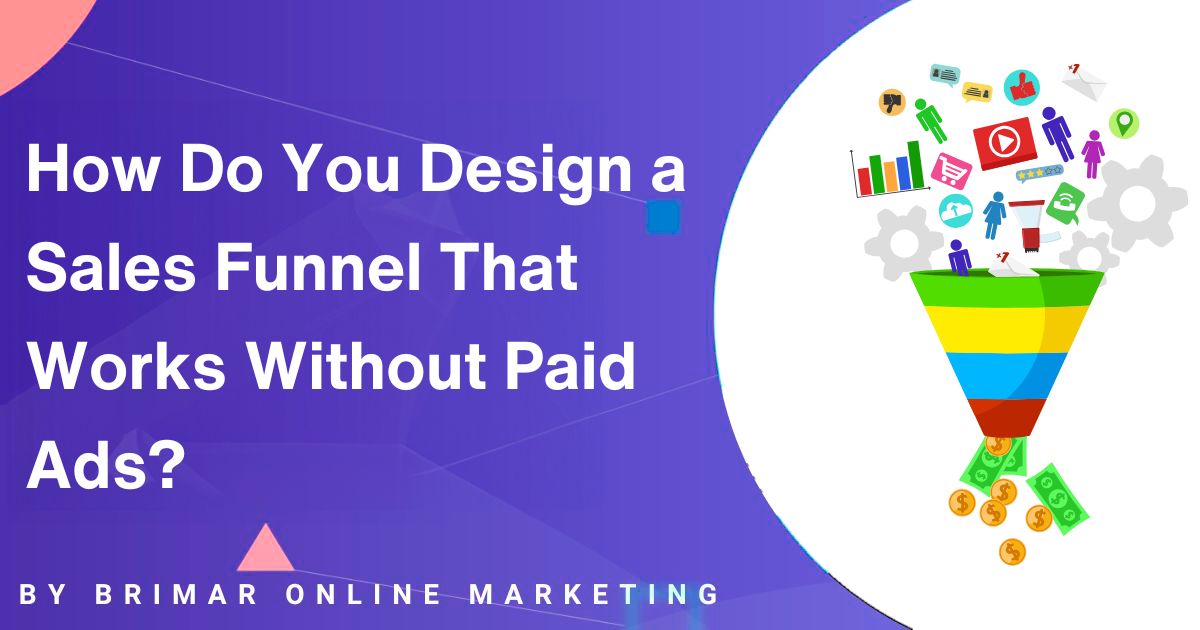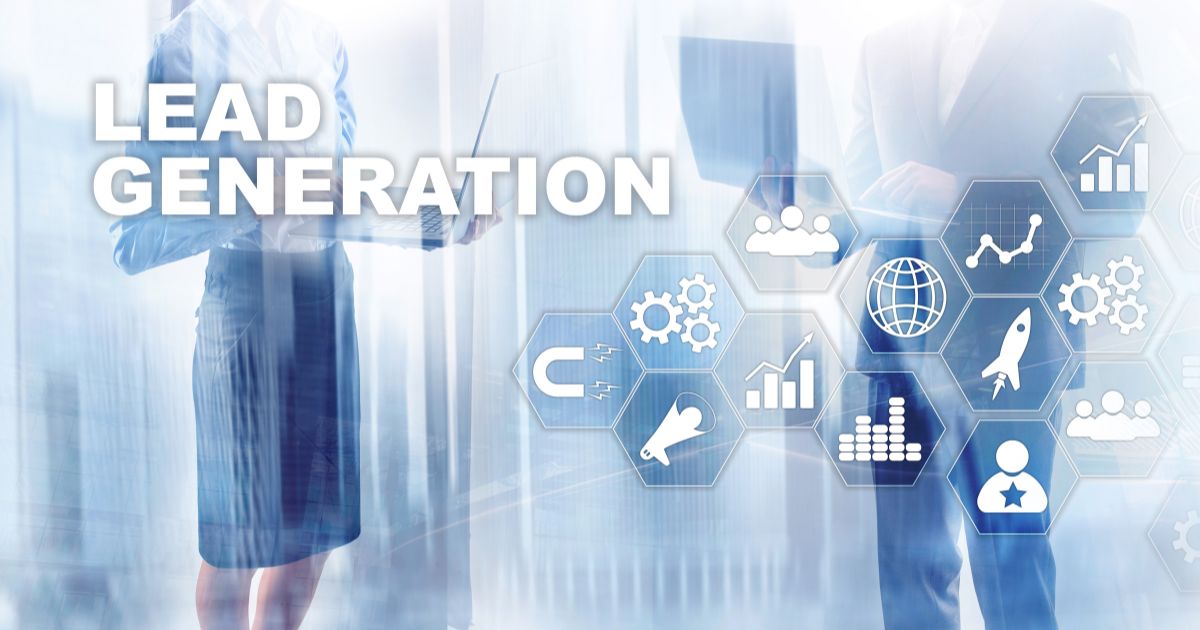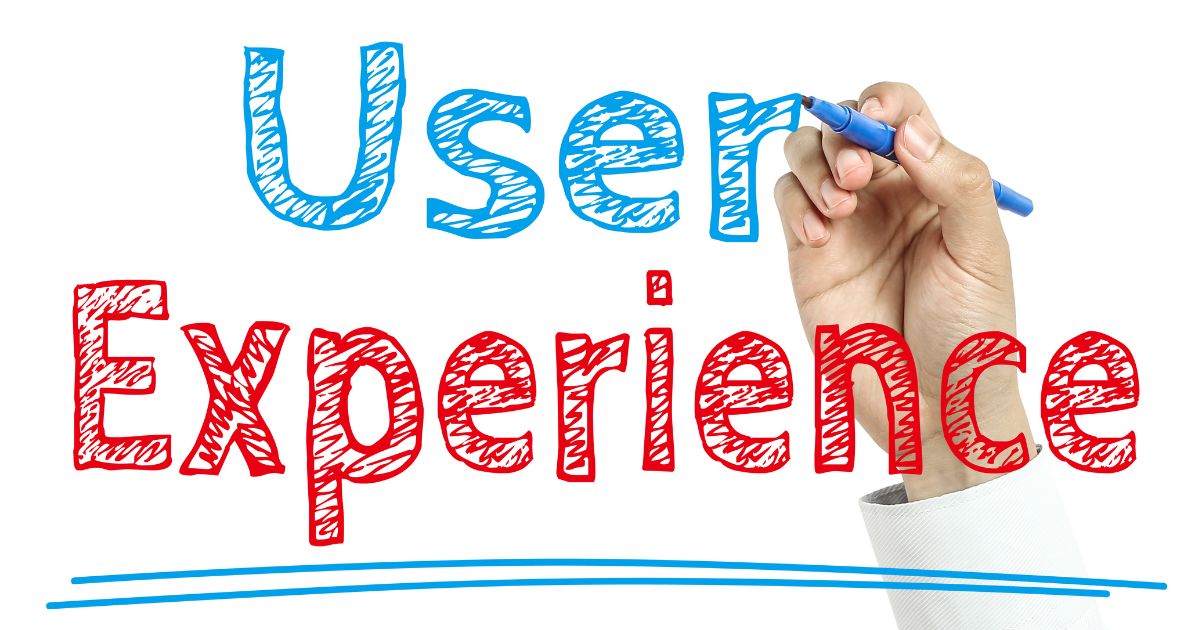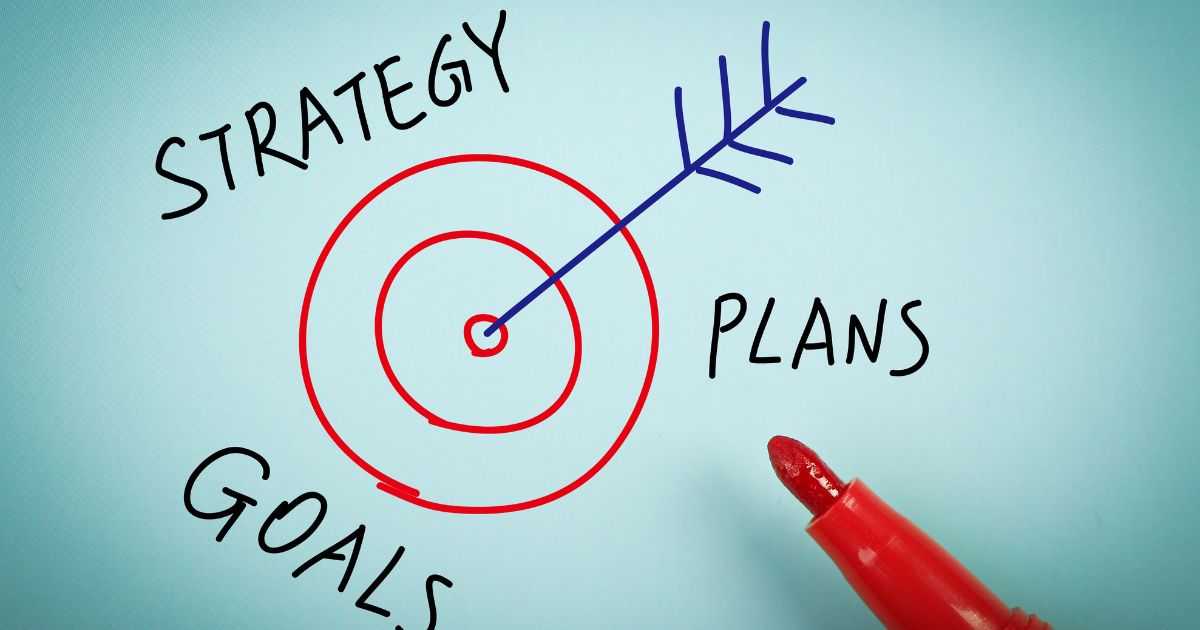
Many business owners fall into the same trap: they believe the only way to get more sales is to pour money into ads.
Facebook ads, Google ads, sponsored posts, you name it.
And while paid advertising can work, it’s not the only growth path.
In fact, it’s often the most expensive one, especially if you don’t have a clear strategy behind it.
You don’t need a massive ad budget to turn strangers into customers.
A well-designed sales funnel can guide potential customers through every step of the decision-making process, without spending a single dollar on ads.
The best funnels today are built on valuable content, search engines, and social media.
They work because they meet people where they already are and give them what they’re looking for.
That’s why a digital marketing funnel isn’t just another tactic; it’s a powerful tool for long-term growth.
It helps you attract qualified leads, build trust with your target audience, and eventually convert them into loyal customers.
The Basics of a Sales Funnel
Before you can design a funnel that works, you need to understand what it is.
A sales funnel is simply a series of steps that guide potential buyers from discovering your brand to becoming paying customers.
Consider it a roadmap that leads a curious website visitor to become a loyal customer who keeps returning again.
A typical sales funnel includes four main stages:
- Awareness stage. This is where people first learn about you. Maybe they find one of your blog posts through search engines or stumble across your content on social media. At this stage, they aren’t prepared to make a purchase, but they are receptive to considering it learning.
- Interest stage. Now they’re paying closer attention. They might sign up for your email list, download a lead magnet, or engage with your educational content. Here, they’re showing signs of becoming a qualified lead.
- Consideration stage. This is where people start comparing options. They’ll look at case studies, pricing pages, and testimonials. They want to know if your solution is the right fit.
- Decision stage. The final step. This is the stage where potential leads turn into paying customers. A clear CTA, a risk-free trial, or strong customer support can make the difference.
The customer journey doesn’t end at the decision stage.
Once someone becomes a new customer, your goal is to nurture them into a loyal customer.
That means staying in touch with valuable content, offering relevant products, and providing social proof that reinforces their choice.
Every online sales funnel, no matter the business model, follows these basic steps.
Whether you’re running a SaaS company, an online course creator selling a new program, or an online store offering physical products, the process is the same.
The funnel simply adapts to your specific goals, customer base, and marketing strategies.
Need a Sales Funnel that Converts?
Struggling to turn clicks into customers?
A high-converting sales funnel could be the missing link. We’ll help you build a simple, straightforward, and effective funnel that guides your visitors step-by-step, so they take action, not just browse.
The First Step: Attracting Potential Customers Organically
The most effective sales funnels start with attention, and one of the easiest ways to get it is through organic channels.
When people search on Google or Bing, they’re already looking for solutions.
If your site shows up in those results, you’re immediately in front of potential customers who are actively searching for what you offer.
That’s the magic of organic search.
SEO and blog posts play a huge role here.
Think of a blog post as a digital handshake.
Every article you publish gives search engines more reasons to rank your site, which means more website visitors.
When your content shows up in organic search results, you’re not just getting traffic, you’re building authority and trust.
Content marketing is the engine behind all of this.
Educational content, case studies, and research reports are what keep people engaged after that first click.
A case study, for example, doesn’t just prove you know what you’re talking about; it lets potential buyers see themselves in the story, which makes them more likely to stick around and keep exploring.
Social media also adds fuel.
Platforms like Instagram, LinkedIn, and X Spaces are no longer optional; they’re key tools for building brand awareness and trust.
A live conversation on X Spaces or LinkedIn Live can position your business as approachable and knowledgeable.
People get to interact with you directly, and that interaction plants the seeds for long-term loyalty.
The best way to bring potential leads into the top of your sales funnel is to meet them where they already are: search engines, social media, and blogs.
Show up with valuable information at the exact moment they’re looking for it, and you’ve taken the first step toward guiding them into your funnel.
Creating a Strong Lead Generation System

Attracting attention is one thing, but converting that attention into qualified leads requires a system.
That’s where a lead magnet comes in.
Offering a free version of your product, free plans, a risk-free trial, or even something as simple as a well-designed research report usually works better than cold outreach.
Why?
Because people are willingly exchanging their information for something valuable, rather than being interrupted with a pitch they didn’t ask for.
The most effective lead magnets don’t feel like marketing at all; they feel like help.
An online tool that solves a small problem, a downloadable case study PDF, or a short online course that teaches a skill is enough to convince potential leads to share their email addresses.
This is where your landing page becomes crucial.
A landing page with a clear CTA is the difference between someone bouncing and someone joining your email list.
The call to action should be clear and straightforward.
“Download Your Free Guide” or “Get Instant Access” works far better than vague phrases like “Click Here.”
Once someone opts in, your email list takes over.
It’s the fuel that keeps every stage of the funnel moving.
With the right email sequences, you can educate, nurture, and eventually guide leads toward becoming paying customers.
An email list is more than just a collection of names in a database; it’s your most dependable marketing asset.
Designing Valuable Content for Every Funnel Stage
If you want better results from your funnel, you need to understand how content fits into each stage of the marketing funnel.
It’s not enough to create one piece of content and hope it works for everyone.
Each stage requires a different type of information.
In the awareness stage, people are just starting their journey.
Blog posts, educational content, and even social proof from other customers can capture their attention.
At this stage, your focus isn’t on selling but on educating and establishing trust.
When they move into the interest stage, they’re curious about what you offer.
This is where email marketing shines.
Thoughtful email sequences, product updates, and introductions to relevant products keep them engaged.
It’s about staying top of mind without overwhelming them.
In the consideration stage, people are comparing options.
Here, case studies, testimonials, and your pricing page do the heavy lifting.
They want proof, clarity, and reassurance that you’re the right choice.
The more transparent and helpful you are, the easier you make their decision-making process.
Finally, in the decision stage, the stakes are highest.
Offering a risk-free trial or a credit card-free sign-up can remove hesitation.
Pair that with responsive customer support, and you’ll give potential buyers the confidence they need to take the final step and become new customers.
At every stage, the rule is simple: deliver valuable content at the right time.
When you provide the answers people are searching for, whether it’s in a blog post, an email, or on your pricing page, you’re not just moving them through a funnel; you’re building trust that lasts well beyond the first purchase.
Optimizing User Experience and Conversions

Designing an effective sales funnel doesn’t stop at creating a landing page and hoping for the best.
The real growth happens when you refine the way people move through your funnel and make every click feel effortless.
A highly effective method is to utilize sales funnel software or builders.
Tools like WordPress sales funnel templates or specialized builders give you a structured foundation, so you don’t have to reinvent the wheel.
Instead of juggling scattered pages, you can keep every stage of the marketing funnel connected in one place.
That’s what makes the customer journey smoother and much easier to track.
Improving conversion rates often comes down to three things: clarity, trust, and experience.
A clear call-to-action (CTA) directs your potential customers precisely on what steps to take next, without any ambiguity or confusion.
Social proof, such as testimonials, reviews, or a quick case study, reminds them they’re not the first to make this decision.
And a seamless user experience, from mobile optimization to fast loading times, ensures they don’t get frustrated and click away.
But here’s where things get exciting: A/B testing.
By running two versions of the same page with small differences, like headline wording, button color, or even pricing page layout, you can see which option gets better results.
Instead of guessing, you’re making data-backed decisions that boost conversions over time.
And to really understand what’s happening behind the scenes, Google Analytics is your best friend.
It shows you where website visitors enter, where they drop off, and which stage of the funnel could use more attention.
That kind of visibility turns random marketing efforts into a deliberate strategy, giving you the insights you need to build a good sales funnel that works.
How to Nurture Qualified Leads into Paying Customers
Attracting potential leads is only the first step.
The true magic lies in nurturing them until they are prepared to buy.
That’s where email sequences come in.
Instead of bombarding people with random messages, a well-structured series of steps guides them through the awareness stage, interest stage, consideration stage, and finally the decision stage.
Each email delivers valuable information at the right time, making the transition from potential buyer to new customer feel natural.
Of course, the sales team and sales reps play a key role too.
Once qualified leads are warmed up, it’s their job to address concerns, answer questions, and personalize the experience.
Marketing teams don’t just hand over names; they align their marketing campaigns with sales goals so the transition between the funnel stages is seamless.
It’s a partnership where both sides collaborate to convert potential customers into loyal ones.
Case studies are one of the most persuasive tools at this stage.
For example, a SaaS company that shares how a client used their software to cut costs or an online store showing how a customer solved a problem with their product makes the value clear.
These stories aren’t just nice to read, they prove that your solution works.
And that proof helps potential buyers make confident decisions, increasing the chances of a paying customer and even long-term loyalty.
Tools and Templates for Building an Automated Sales Funnel
If you’ve ever felt overwhelmed managing every step of your funnel, automation is the lifesaver you’ve been looking for.
An automated sales funnel keeps things moving whether you’re at your desk or not.
It delivers email sequences, tags leads based on their actions, and even sends follow-ups when someone visits your pricing page but doesn’t convert.
For a busy business owner, that’s a powerful tool for saving time and boosting conversions without constant manual work.
Sales funnel templates and predefined strategies also make a huge difference.
Instead of spending weeks mapping out every detail, you can use a ready-to-go structure that’s already proven to work.
These templates ensure you don’t miss the basic steps of a typical sales funnel and allow you to focus on tailoring the message to your target audience.
That’s how you get better results faster.
Numerous sales funnel software and sales funnel builders offer free versions or free plans, which is ideal if you’re just getting started.
They give you access to the right tools without a big upfront investment.
Many SaaS companies rely on these builders, and online course creators use them to capture email addresses, deliver educational content, and move potential leads toward paid programs.
The beauty of these systems is that they grow with you.
Start small with a simple online sales funnel, and as your customer base expands, you can add more stages, more automation, and even integrate advanced features.
That flexibility is why businesses of all sizes, from solo creators to established companies, trust them as part of their sales funnel strategy.
Key Marketing Strategies That Work Without Paid Ads

A sales funnel doesn’t need to rely on paid traffic to bring in potential customers.
In fact, some of the most effective sales funnels are built on strategies that don’t cost a cent but do require consistency and the right approach.
Content marketing and social media marketing channels
Your funnel begins by giving people a reason to pay attention.
That means publishing valuable content that answers questions, solves problems, or inspires your audience.
Blog posts, short videos, case studies, and even X Spaces can all bring people into the awareness stage.
Pair this with active engagement on social media, and you start creating touchpoints that make your brand familiar and trustworthy.
Brand awareness through education and social proof
Potential buyers want reassurance before moving forward.
Educational content, such as research reports, online guides, or mini email courses, positions your business as a leader.
Social proof, testimonials, reviews, and customer success stories help people feel confident that others have walked the same path and had a positive experience.
Both elements strengthen your marketing efforts and make the customer journey smoother.
Organic traffic through SEO and optimized blog posts
While social media can spike interest, search engines provide steady, long-term traffic.
By optimizing blog posts for the terms your target audience is searching for, you ensure your brand shows up at the right time.
Adding backlinks from relevant websites further increases your visibility and credibility.
This organic reach builds a foundation of website visitors who are genuinely interested in what you offer.
Experts who use content-first funnels
Marketers like Neil Patel have shown that content-first funnels can outperform ad-heavy approaches.
Instead of spending big on Facebook ads, they create content that solves real problems, then nurture those readers through email sequences and tailored offers.
This method attracts qualified leads, reduces dependency on ad spend, and often results in higher conversion rates.
Measuring Success and Improving Over Time
Once your funnel is live, the work doesn’t stop.
The most successful business owners treat their funnel like a living system that’s always learning and improving.
Tracking progress with analytics
Google Analytics and other funnel reporting tools reveal where people are dropping off, which landing pages convert best, and which blog posts attract the most potential leads.
Data tells you if your sales funnel strategy is working or if adjustments are needed.
Defining clear goals at every stage
Each stage of the marketing funnel, awareness, interest, consideration, and decision, needs specific goals.
For example, in the awareness stage, your aim might be to capture email addresses.
At the bottom of the funnel, your goal shifts to converting potential buyers into paying customers.
Having those goals mapped out ensures your marketing team and sales reps stay aligned.
Using customer data to refine strategies
Every click, sign-up, and download adds to your understanding of your audience.
By analyzing this data, you can fine-tune your messaging, adjust your offers, and improve the decision-making process for your potential customers.
The role of A/B testing
Sometimes the difference between a funnel that struggles and a funnel that thrives comes down to details.
A/B testing your subject lines, CTAs, or even the layout of your pricing page can reveal what truly resonates with your audience.
Over time, these small adjustments compound into better results and higher conversion rates.
Final Thoughts
You don’t need Facebook ads or any paid ads to build an effective marketing funnel.
The best way is still the timeless way: creating valuable content, showing up in organic search, and using social proof to build trust.
Start with the basics: a clear offer, a simple landing page, and a lead magnet that solves a real problem.
Add in blog posts and social media engagement to drive awareness.
From there, nurture your potential leads with educational content, case studies, and email sequences until they become loyal customers.
If you’re a business owner who doesn’t have the time or expertise to build a good sales funnel yourself, let Brimar Online Marketing do the heavy lifting.
Our team knows how to design funnels that generate qualified leads, increase conversions, and convert website visitors into loyal customers, all without wasting money on ads.
Your customer base is out there waiting.
The only question is: are you ready to give them the right funnel at the right time?
Our Digital Marketing Services Have Helped Our Clients Increase Their Revenue!
“I highly recommend Brimar if your looking to grow your online business. You will be satisfied with the high level of expertise and high quality of services. It has helped my business grow by leaps and bounds.”
CEO
